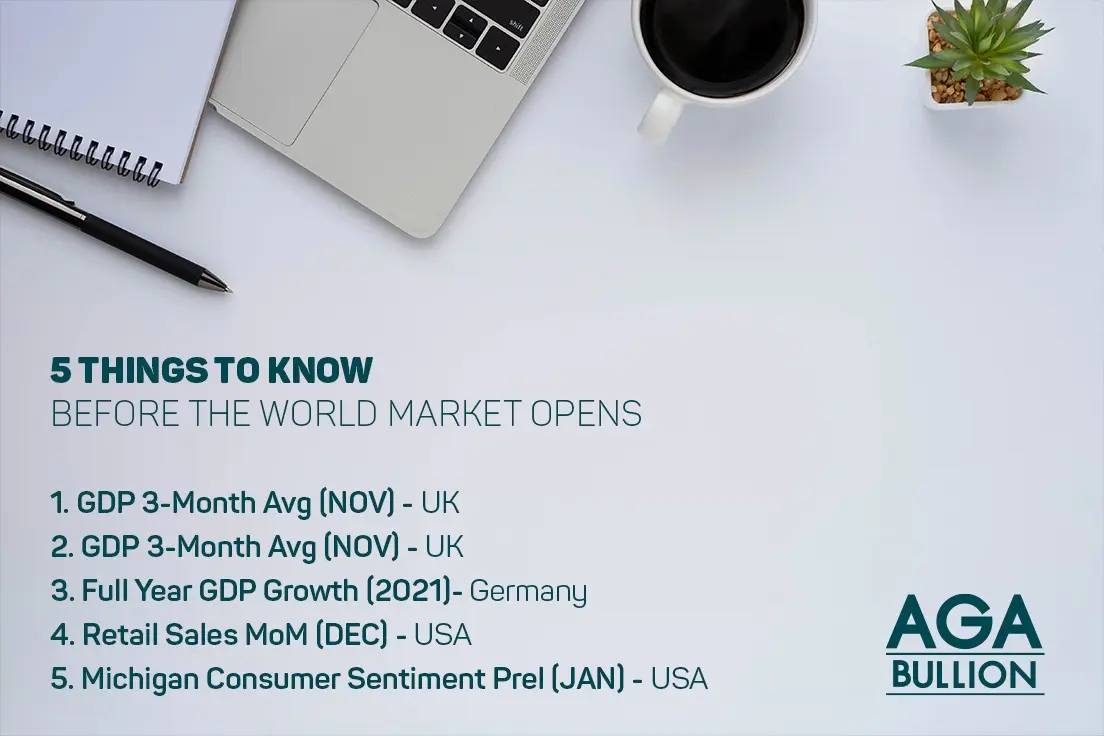14th Jan 2022 - Key global events on the horizon that could subtly shift or substantially shake up the financial markets
1. GDP 3-Month Avg (NOV) - UK
GDP measures the value of goods and services produced in the UK. The reading refers to a three-month growth rate, which is a better indicator of the underlying growth in GDP as the monthly figure is likely to be more volatile. In this sense, the monthly release can be thought of as a monthly update on three months’ worth of data on the economy, rather than a figure representing the economy in just one month. Rolling three-month data is calculated by comparing growth in a three-month period with growth in the previous three-month period, for example growth in March to May compared with the previous December to February.
2. GDP 3-Month Avg (NOV) – UK
GDP measures the value of goods and services produced in the UK. The reading refers to a year-on-year growth rate.
3. Full Year GDP Growth (2021) – Germany
The German economy - the fifth largest economy in the world and Europe's largest - is a leading exporter of machinery, vehicles, chemicals, and household equipment and benefits from a highly skilled labor force. Composition of the GDP on the expenditure side: household consumption (55 percent), gross capital formation (20 percent, of which 10 percent in construction, 6 percent in machinery and equipment and 4 percent in other products) and government expenditure (19 percent). Exports of goods and services account for 46 percent of GDP while imports account for 39 percent, adding 7 percent to total GDP.
4. Retail Sales MoM (DEC) – USA
Retail sales report in the US provides aggregated measure of sales of retail goods and services over a period of a month. There are thirteen major types of retailers: Motor vehicle & parts dealers (around 20 percent of total sales), Food & beverage stores (13%), General merchandise stores (12.5%), Food services & drinking places (11%), Gasoline stations (10%), Nonstore retailers (9.2%), Building material & garden dealers (6%), Health & personal care stores (6%), Clothing & clothing accessories stores (5%), Miscellaneous store retailers (2.3%), Furniture stores (2%), Electronics & appliance stores (2%) and Sporting goods, hobby, book & music stores (1.7%).
5. Michigan Consumer Sentiment Prel (JAN) – USA
The Index of Consumer Expectations focuses on three areas: how consumers view prospects for their own financial situation, how they view prospects for the general economy over the near term, and their view of prospects for the economy over the long term. Each monthly survey contains approximately 50 core questions, each of which tracks a different aspect of consumer attitudes and expectations. The samples for the Surveys of Consumers are statistically designed to be representative of all American households, excluding those in Alaska and Hawaii. Each month, a minimum of 500 interviews are conducted by telephone.







